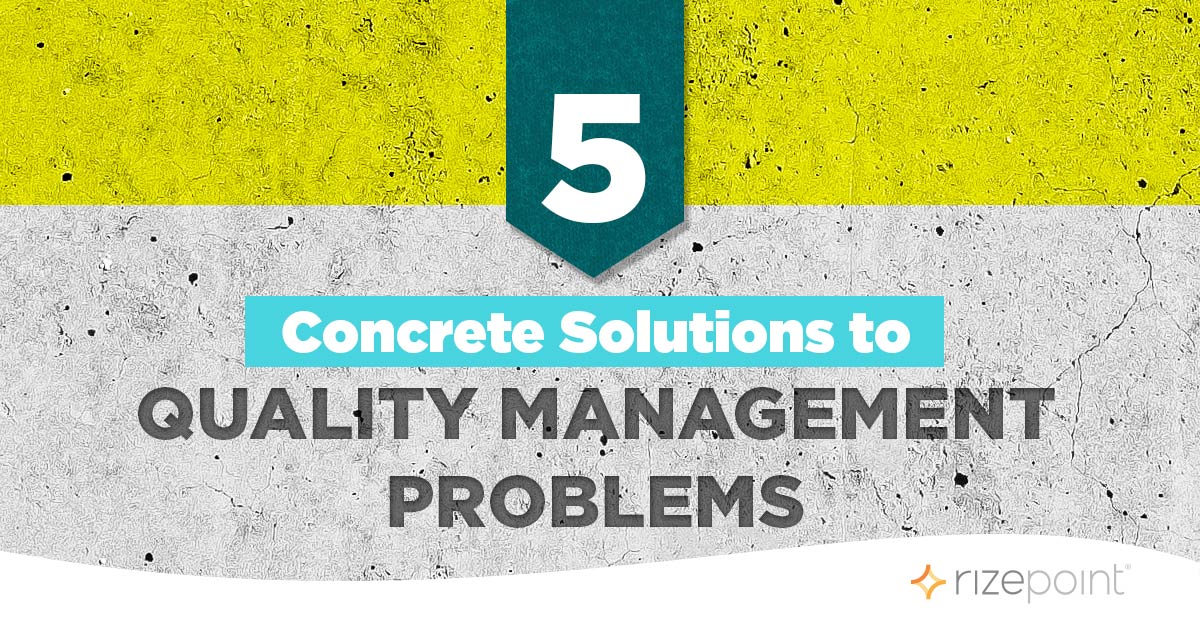The world for quality management is changing dramatically. Supply chains are more complex, poor customer experiences can go viral in minutes, and COVID-19 has created a number of new potential risks and liabilities.
However, while the pandemic has surfaced new concerns, it did not cause these challenges for quality teams. Instead, they are the result of decades of technological innovation, evolving workplaces, and updated regulations.
Fortunately, these challenges are solvable. You can elevate quality and safety protocols with a few adjustments to the way you work, and to the tools that help you manage it all.
1. Make self-assessments a regular part of your quality data gathering.
Many businesses see self-assessments as something akin to an open-book test. Not technically cheating, but not as good as a test that required hours of study. We want to reframe that perception.
Increasing the frequency of self-assessments is a critical part of obtaining full visibility into your quality and safety goals. Self-assessments are not better or worse than annual or third-party assessments, simply different. They play a unique role in the quality ecosystem by helping you gather daily insights into every location.
Frequent self-assessments not only give you broader visibility, they also reinforce new or existing standards to employees. Empowering employees with knowledge and ownership of their work will help you build a continuous quality improvement model that pulls from multiple sources of data and pushes feedback directly to the places it will most make a difference.
2. Invest in software that enables data gathering and analysis.
Quality teams have struggled for years to find an effective way to compile and make sense of the data they gather. Spreadsheets have been a staple of the role since the dawn of Excel, but they don’t make it easy to collect and report on reams of data.
That is why you should look at a quality management system (QMS). A QMS makes it possible for you to keep what works for you and elevate what isn’t. If you love spreadsheets, but struggle with how disconnected they make your data, you can import the spreadsheets into a QMS and let it make the reports for you. If you want to collect more data but don’t have a way to correlate data from different sources, a QMS is built to help you do that.
If you’re ready to move into a modern quality model, you need something that will help you work better and the technology now exists to enable you.
3. Make food safety culture more than a buzzword.
It’s easy to say you want to change this or that about your culture, but it’s much harder to do so. Self-assessments will be part of helping you do that. Employees who see you care about and monitor food safety protocols are more likely to care as well.
You also need to take employee feedback seriously. Whether that comes in the form of a tipline, a self-assessment, or comments to managers, don’t brush off what employees have to say about food safety. They are the ones who see what the needs are every day. They may be able to point out improvements to the kitchen layout to reduce risk of cross contamination or tell you when a manager is ignoring proper hot and cold storage. It’s your job to listen and turn that feedback into a piece of your continuous safety and quality improvement system.
4. Make electronic updates the norm to improve consistency.
COVID-19 has exposed the weakness in antiquated paper communication with your employees. Too many companies are still using printouts that get missed by a third of employees or aren’t updated when policy changes.
You can distribute updated policies quickly and easily with digital systems. You can give employees accurate, timely updates in times of crisis or as needed, and know you have an effective communications system in place that you can rely on.
5. Modernize your vendor onboarding process.
Being able to quickly vet and onboard new vendors is a crucial to protecting your business during supply chain disruptions. During the pandemic, many companies have found themselves scrambling when key suppliers were out of critical items.
You can communicate with suppliers, avoid approval delays, and gather credentials with digital supplier management tools. All of this helps you ensure any new supplier meets your standards before becoming an approved vendor, and lets you act quickly when disruptions affect your business.
Adapting to the changing needs of quality management is a challenge, but solutions are available. You can start taking concrete steps to update how you collect, analyze, and communicate data. A quality management system will help you lay the foundation for a continuous quality management model, so you can keep what is tried and true for your team (like our beloved spreadsheets!) while getting help with the areas that give you trouble.
